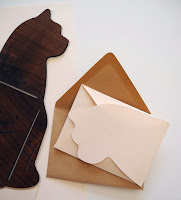Event report – “Intellectual Property and the Visual” ISHTIP 2019 1/2
 |
On 4-6 July 2019, University Technology Sydney (Australia) hosted the annual workshop of the International Society for the History and Theory of Intellectual Property (“ISHTIP” for short).
This year’s workshop focused on “Intellectual Property and the Visual”. Speakers were invited to respond to this theme from any discipline and, indeed, multiple angles of “Intellectual Property” and the “visual” were explored during the workshop.
Here is a summary of the papers presented to give Kat readers a flavour of the lively discussions that took place.
Day 1 of ISHTIP
The conference opened with a session discussing the work of doctoral researchers Mary K. Hadley (University of New South Wales), Adelaide Dunn (Sotheby’s Institute of Art & NYU) and Isabelle Strömstedt (Linköping University). First up, Hadley shared the findings of her empirical work interviewing tattoo artists in New Zealand to discuss their engagement with copyright.
Dunn discussed how artists and socialites have taken part in “trolling” about copying, plagiarism and appropriating other people’s work. Dunn described how threats to take legal actions and cease-and-desist letters have made their they way onto social media as a way for those at the receiving end to get back at the senders. This trolling is nothing but a good old-fashioned “name-and-shame” strategy, used by either side, to denounce content appropriation by illegitimate “free-riders”, or to point the finger at the overzealous rightsholders who threaten other artists with claims of infringement.
Strömstedt covered a different topic altogether, taking us back to the exhibition put on by the Swedish Patent Office in 1941 to celebrate the institution’s jubilee anniversary.
 |
| Orr Ewing (claimant)’s mark |
 |
| Johnston (defendant)’s mark |
Two papers on trade marks followed in the next session. The first one, authored by Lionel Bently (University of Cambridge), discusses two decisions, one of which is the passing off case Johnston v Archibald Orr Ewing & Co (1882). This case involved two textile manufacturers trading in India and the “Easter Markets”. Both disputed marks featured a pair of elephants in their design, leading the Court into a complex assessment of visual, oral and conceptual similarity of the signs. The dispute hinged on the argument that the image of the two elephants in the claimant’s sign made its way into an oral shorthand for the mark, which became known as “the two elephants”. The Court put forth the view that the marks could be confused by consumers, who would refer to the mark by the same phrase: “the two elephants”.
 |
The following paper, by Jeremy Pilcher (Birkbeck University of London), explored trade mark infringement in the context of artistic appropriation and parody. Pilcher’s work looks at artists who have appropriated aspects of intellectual property rights in the form of parody or satire. Pilcher takes the example of TM Clubcard (here and here), a website designed by Rachel Baker as a parody and critique of supermarket loyalty card schemes, such as the one offered by Tesco’s. The paper describes how the artist found herself embroiled in trade mark infringement litigation.
The second session started with Eva Hemmungs Wirtén (Linköping University), who retraced the place and history of the French “Soleau” envelope (here). The envelope was used in French scientific circles to support a claim novelty or hold information confidential.
A paper by Xan Chacko (University of Queensland) on Ellen Isham Schutt’s paintings of rotting apples (1911-1915) came next. In her words, “Schutt was commissioned by the University of California to paint comparative series of locally farmed apples”. This commission followed Schutt’s involvement with the US Department of Agriculture (USDA) to create a catalogue representing “standard fruits”. Chacko’s work describes Ellen Isham’s contribution to the scientific classification of organic matter, like apples, through the process of representing them in water colour paintings.
For Papers presented during Day 2 and 3 of the workshop go to the next post (here)!
